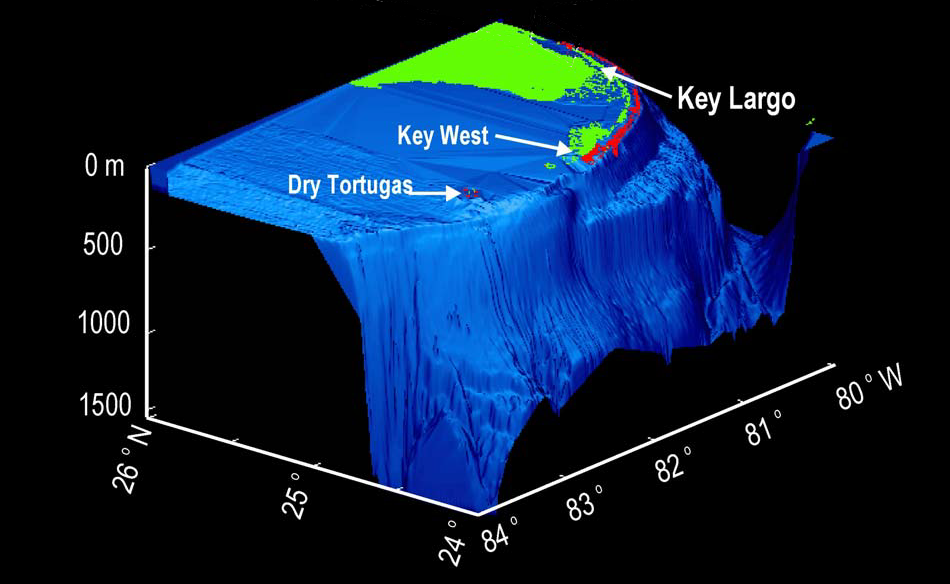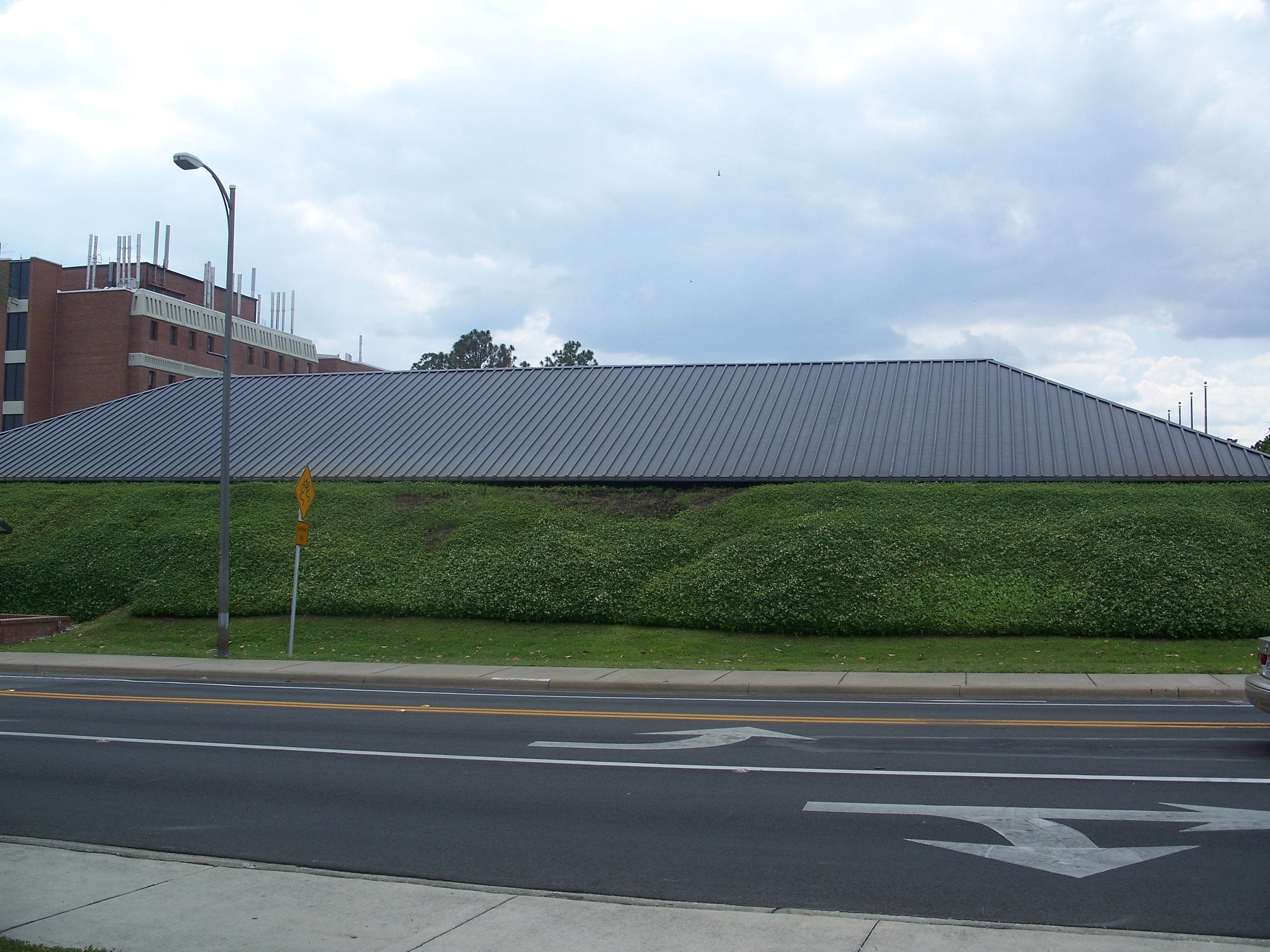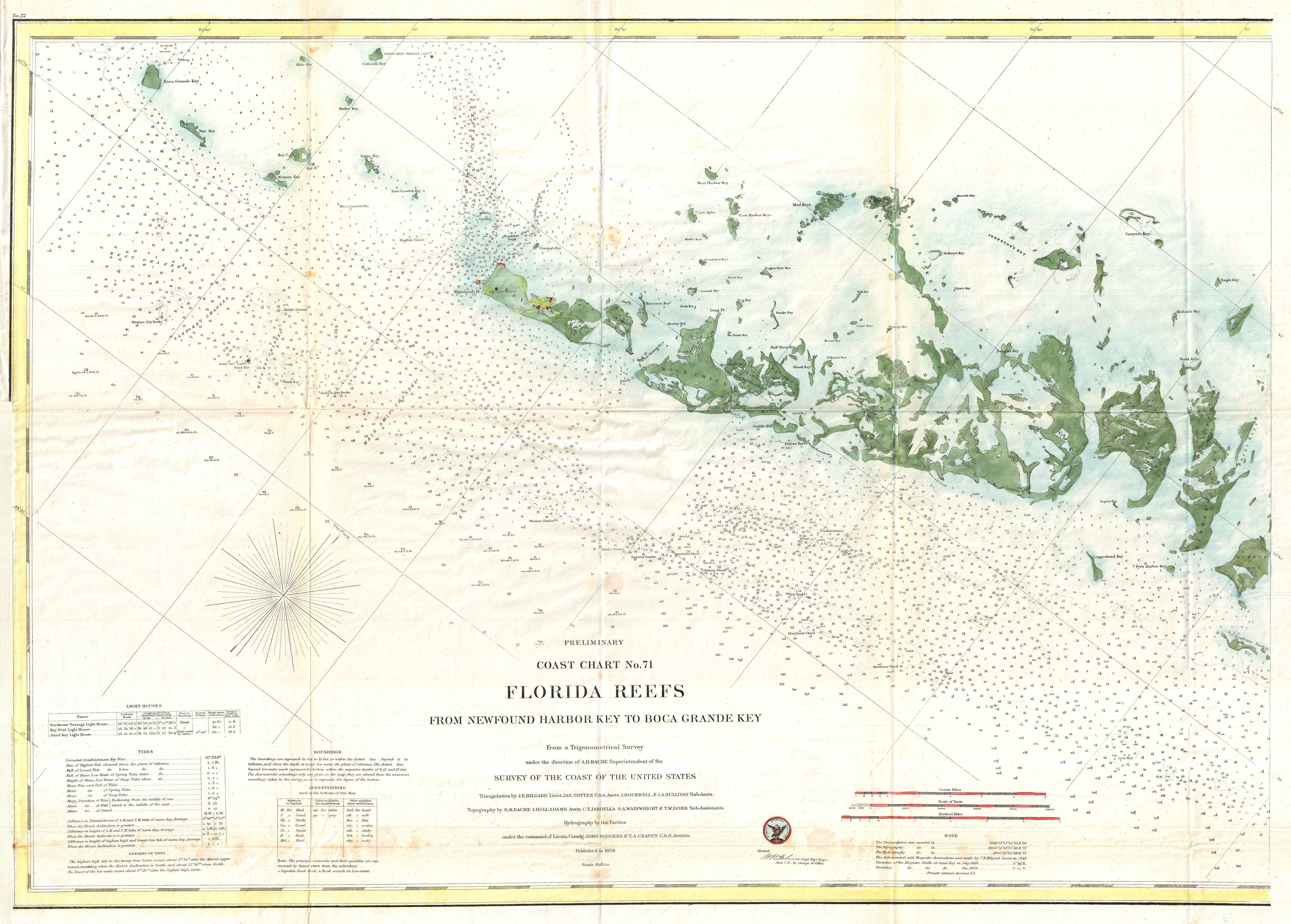|
Florida Reef
The Florida Reef (also known as the Great Florida Reef, Florida reefs, Florida Reef Tract and Florida Keys Reef Tract) is the only living coral barrier reef in the continental United States. It lies a few miles seaward of the Florida Keys, is about 4 miles (6 to 7 km) wide and extends along the depth contour from Fowey Rocks just east of Soldier Key to just south of the Marquesas Keys. The system encompasses more than 6,000 individual reefs. Florida waters are home to over 500 marine fish and mammal species along with more than 45 species of stony corals and 35 species of octocorals. Geography The barrier reef tract forms a great arc, concentric with the Florida Keys, with the northern end, in Biscayne National Park, oriented north-south and the western end, south of the Marquesas Keys, oriented east-west. The rest of the reef outside Biscayne National Park lies within John Pennekamp Coral Reef State Park and the Florida Keys National Marine Sanctuary. Isola ... [...More Info...] [...Related Items...] OR: [Wikipedia] [Google] [Baidu] [Amazon] |
Florida Bay
Florida Bay is the bay located between the southern end of the Florida mainland (the Everglades, Florida Everglades) and the Florida Keys in the United States. It is a large, shallow estuary that while connected to the Gulf of Mexico, has limited exchange of water due to shallow mudbanks dividing the bay into many basins or lakes. The banks separate the bay into basins, each with its own unique physical characteristics. Description Encompassing roughly one-third of Everglades National Park, Florida Bay is variously stated to be , or , or . The bay has been described as an Continental shelf#Topography, inner continental shelf lagoon. The northern edge of the bay is formed by the Florida mainland. The eastern and southern edge of the bay is defined by the Florida Keys, with only a few natural passages between islands connecting to the Atlantic Ocean. The western edge of the bay is defined by the westernmost mud banks of the bay. Nearly all of Florida Bay is included in Everglades N ... [...More Info...] [...Related Items...] OR: [Wikipedia] [Google] [Baidu] [Amazon] |
Brain Coral
Brain coral is a common name given to various corals in the families Mussidae and Merulinidae, so called due to their generally spheroid shape and grooved surface which resembles a brain. Each head of coral is formed by a colony of genetically identical polyps which secrete a hard skeleton of calcium carbonate; this makes them important coral reef builders like other stony corals in the order Scleractinia. Brain corals are found in shallow warm water coral reefs in all the world's oceans. They are part of the phylum Cnidaria, in a class called Anthozoa or "flower animals". The lifespan of the largest brain corals is 900 years. Colonies can grow as large as 1.8 m (6 ft) or more in height. Brain corals extend their tentacles to catch food at night. During the day, they use their tentacles for protection by wrapping them over the grooves on their surface. The surface is hard and offers good protection against fish or hurricanes. Branching corals, such as staghorn co ... [...More Info...] [...Related Items...] OR: [Wikipedia] [Google] [Baidu] [Amazon] |
Porites Astreoides
''Porites astreoides'', commonly known as mustard hill coral or yellow porites, is a Colony (biology), colonial species of Scleractina, stony coral in the Family (biology), family Poritidae. It is a common species in the Caribbean Sea and western tropical Atlantic Ocean in North, Central, and South America; and the eastern tropical Atlantic Ocean in western Africa. Description When it grows in fast-flowing, shallow water, ''Porites astreoides'' is encrusting but in calmer water at medium depths it is a massive coral with a smooth, mounded, semi-spherical form and can grow to in diameter. At greater depths it is usually plate-like and in caves and under overhangs the plates are angled to receive the maximum amount of light. It is the only species within the genus ''Porites'' not to have a finger-like form. The corallites are small and tightly-packed and give the coral a porous appearance. The polyp (zoology), polyps each have six tentacles and are generally retracted during the d ... [...More Info...] [...Related Items...] OR: [Wikipedia] [Google] [Baidu] [Amazon] |
Limestone
Limestone is a type of carbonate rock, carbonate sedimentary rock which is the main source of the material Lime (material), lime. It is composed mostly of the minerals calcite and aragonite, which are different Polymorphism (materials science), crystal forms of calcium carbonate . Limestone forms when these minerals Precipitation (chemistry), precipitate out of water containing dissolved calcium. This can take place through both biological and nonbiological processes, though biological processes, such as the accumulation of corals and shells in the sea, have likely been more important for the last 540 million years. Limestone often contains fossils which provide scientists with information on ancient environments and on the evolution of life. About 20% to 25% of sedimentary rock is carbonate rock, and most of this is limestone. The remaining carbonate rock is mostly Dolomite (rock), dolomite, a closely related rock, which contains a high percentage of the mineral Dolomite (mine ... [...More Info...] [...Related Items...] OR: [Wikipedia] [Google] [Baidu] [Amazon] |
Algae
Algae ( , ; : alga ) is an informal term for any organisms of a large and diverse group of photosynthesis, photosynthetic organisms that are not plants, and includes species from multiple distinct clades. Such organisms range from unicellular microalgae, such as cyanobacteria, ''Chlorella'', and diatoms, to multicellular macroalgae such as kelp or brown algae which may grow up to in length. Most algae are aquatic organisms and lack many of the distinct cell and tissue types, such as stomata, xylem, and phloem that are found in embryophyte, land plants. The largest and most complex marine algae are called seaweeds. In contrast, the most complex freshwater forms are the Charophyta, a Division (taxonomy), division of green algae which includes, for example, ''Spirogyra'' and stoneworts. Algae that are carried passively by water are plankton, specifically phytoplankton. Algae constitute a Polyphyly, polyphyletic group because they do not include a common ancestor, and although Eu ... [...More Info...] [...Related Items...] OR: [Wikipedia] [Google] [Baidu] [Amazon] |
Florida Museum Of Natural History
The Florida Museum of Natural History (FLMNH) is Florida's official state-sponsored and chartered natural history museum. Its main facilities are located at 3215 Hull Road on the campus of the University of Florida in Gainesville, Florida, Gainesville. The main public exhibit facility, Powell Hall and the attached McGuire Center, is located in the Cultural Plaza, which it shares with the Samuel P. Harn Museum of Art and the Curtis M. Phillips Center for the Performing Arts. The main research facility and former public exhibits building, Dickinson Hall, is located on the east side of campus at the corner of Museum Road and Newell Drive. On April 18, 2012, the American Institute of Architects's Florida chapter placed Dickinson Hall on its list of Florida Architecture: 100 Years. 100 Places as the Florida Museum of Natural History / Formerly Florida Museum of Natural Sciences. Powell Hall's permanent public exhibits focus on the flora, fauna, fossils, and historic peoples of the st ... [...More Info...] [...Related Items...] OR: [Wikipedia] [Google] [Baidu] [Amazon] |
Caribbean Sea
The Caribbean Sea is a sea of the Atlantic Ocean, North Atlantic Ocean in the tropics of the Western Hemisphere, located south of the Gulf of Mexico and southwest of the Sargasso Sea. It is bounded by the Greater Antilles to the north from Cuba to Puerto Rico, the Lesser Antilles to the east from the Virgin Islands to Trinidad and Tobago, South America to the south from the Venezuela, Venezuelan coastline to the Colombia, Colombian coastline, and Central America and the Yucatán Peninsula to the west from Panama to Mexico. The Geopolitics, geopolitical region around the Caribbean Sea, including the numerous islands of the West Indies and adjacent coastal areas in the mainland of the Americas, is known as the Caribbean. The Caribbean Sea is one of the largest seas on Earth and has an area of about . The sea's deepest point is the Cayman Trough, between the Cayman Islands and Jamaica, at below sea level. The Caribbean coastline has many gulfs and bays: the Gulf of Gonâve, the Gul ... [...More Info...] [...Related Items...] OR: [Wikipedia] [Google] [Baidu] [Amazon] |
Stony Coral
Scleractinia, also called stony corals or hard corals, are marine animals in the phylum Cnidaria that build themselves a hard skeleton. The individual animals are known as polyps and have a cylindrical body crowned by an oral disc in which a mouth is fringed with tentacles. Although some species are solitary, most are colonial. The founding polyp settles and starts to secrete calcium carbonate to protect its soft body. Solitary corals can be as much as across but in colonial species the polyps are usually only a few millimetres in diameter. These polyps reproduce asexually by budding, but remain attached to each other, forming a multi-polyp colony of clones with a common skeleton, which may be up to several metres in diameter or height according to species. The shape and appearance of each coral colony depends not only on the species, but also on its location, depth, the amount of water movement and other factors. Many shallow-water corals contain symbiont unicellular organis ... [...More Info...] [...Related Items...] OR: [Wikipedia] [Google] [Baidu] [Amazon] |
Florida Straits
The Straits of Florida, Florida Straits, or Florida Strait () is a strait located south-southeast of the North American mainland, generally accepted to be between the Gulf of Mexico and the Atlantic Ocean, and between the Florida Keys (U.S.) and Cuba. It is 93 mi (150 km) wide at the narrowest point between Key West and the Cuban shore, and has been sounded to a depth of 6,000 feet (1,800 m). The strait carries the Florida Current, the beginning of the Gulf Stream, from the Gulf of Mexico. Oil and gas Five wells were drilled in state waters south of the Florida Keys from 1947 to 1962. Gulf Oil drilled three wells in federal waters south of the Florida Keys in 1960 and 1961. All the wells were dry holes. The boundary between the Exclusive Economic Zones of the US and Cuba is halfway between Cuba and Florida, as determined by the 1977 Cuba–United States Maritime Boundary Agreement. Offshore Cuba Cuba has three producing offshore oil fields within 5 k ... [...More Info...] [...Related Items...] OR: [Wikipedia] [Google] [Baidu] [Amazon] |
Hawk Channel
Hawk Channel is a shallow, elongated Oceanic basin, basin and Channel (geography), navigable passage along the Atlantic Ocean, Atlantic coast of the Florida Keys. The channel makes up a smaller portion of the Florida Platform from Key West to the southernmost point of Key Biscayne and lies between the Keys and the Florida Reef, Florida Reef Tract to the southeast. It connects the waters of the Gulf of Mexico to the Atlantic Ocean through Tide, tidal exchanges crossing from the Florida Bay to the Straits of Florida. It extends roughly from Fowey Rocks Light, Fowey Rocks, off Key Biscayne, to Sand Key Light, Sand Key, off Key West. Its width ranges from approximately to wide at its narrowest part. It varies in depth from off the Upper Keys along the center of the channel to off the Middle and Lower Keys. A Course (navigation), course in Hawk Channel roughly offshore is partially protected by the deepwater of the Straits of Florida and allows vessels Draft (hull), drawing roughl ... [...More Info...] [...Related Items...] OR: [Wikipedia] [Google] [Baidu] [Amazon] |








